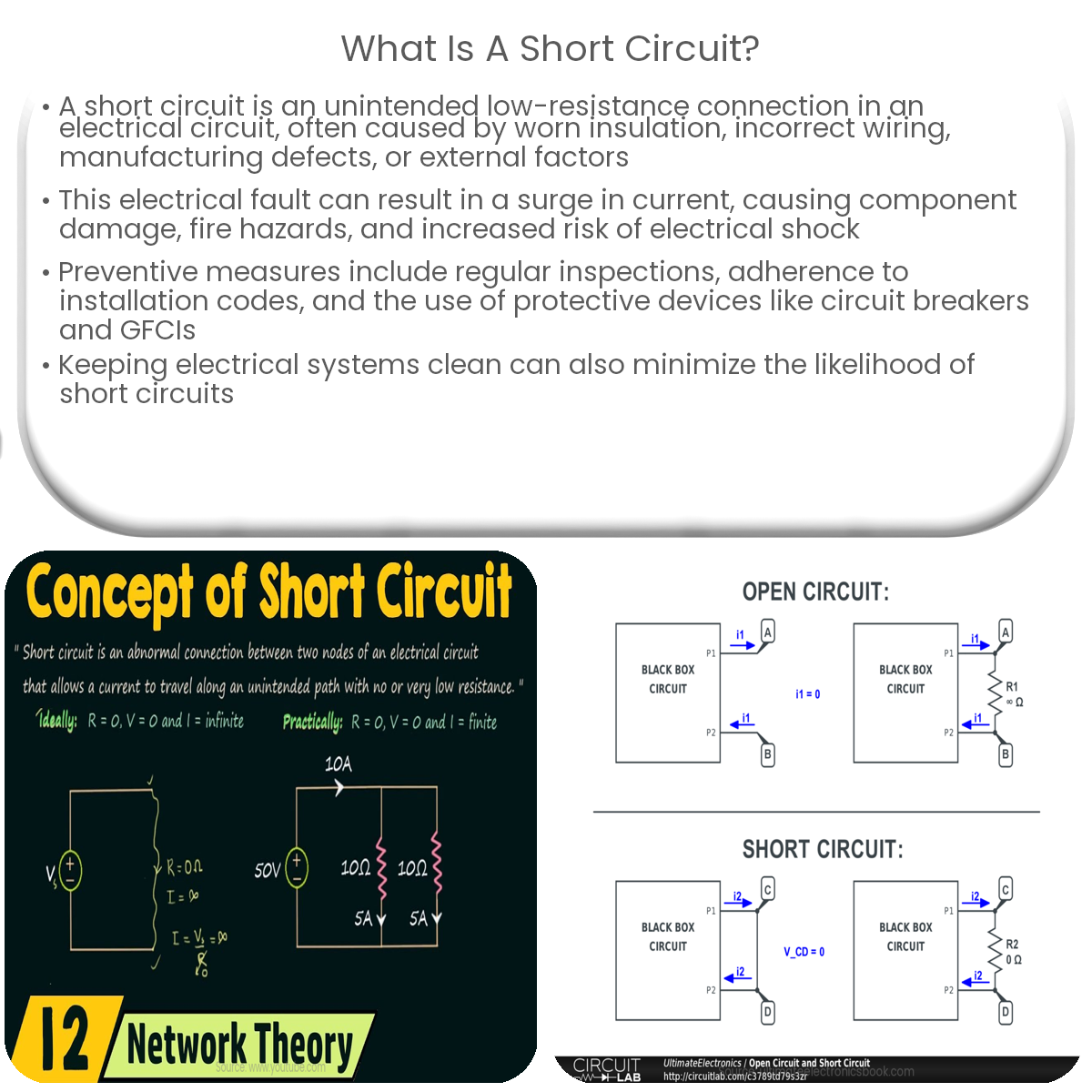A short circuit occurs when an unintended low-resistance connection forms in a circuit, causing a surge in current that can lead to damage or hazards.
What is a Short Circuit?
A short circuit is an electrical fault that occurs when an unintended connection forms between two points in a circuit, creating a low-resistance path for the current to flow. This unexpected connection can cause a surge in current, potentially leading to damage or hazardous conditions.
Causes of Short Circuits
There are several common causes of short circuits, including:
- Worn or damaged insulation: Over time, the insulation around wires can wear down or become damaged, causing exposed wires to touch each other or a conductive surface.
- Incorrect wiring: Mistakes in wiring, such as connecting wires to the wrong terminals or improperly connecting components, can create short circuits.
- Manufacturing defects: Faulty components or manufacturing errors can introduce unintended conductive paths in circuits.
- External factors: Environmental factors like moisture, dust, or physical damage can cause conductive materials to bridge connections, leading to short circuits.
Consequences of Short Circuits
Short circuits can lead to several negative outcomes, such as:
- Component damage: The surge in current can cause overheating and damage to components within the circuit, reducing their lifespan or causing immediate failure.
- Fire hazards: Excessive heat generated by a short circuit can cause nearby materials to ignite, leading to fires.
- Electrical shock: Short circuits can create hazardous voltage levels, increasing the risk of electrical shock to individuals near the affected circuit.
Preventing and Detecting Short Circuits
There are several ways to prevent and detect short circuits, including:
- Regular inspections: Periodically checking electrical systems for signs of wear, damage, or incorrect connections can help identify potential short circuits.
- Proper installation: Ensuring that electrical systems are installed according to codes and manufacturer guidelines can reduce the likelihood of short circuits.
- Use of protective devices: Circuit breakers, fuses, and ground fault circuit interrupters (GFCIs) can help protect against short circuits by interrupting the flow of current when a fault is detected.
- Maintaining a clean environment: Keeping electrical systems free of dust, moisture, and debris can help prevent the formation of conductive paths that lead to short circuits.
In summary, a short circuit is an unintended low-resistance connection in an electrical circuit that can cause damage, fire hazards, and electrical shock. Preventing and detecting short circuits through regular inspections, proper installation, and the use of protective devices can help maintain the safety and reliability of electrical systems.


